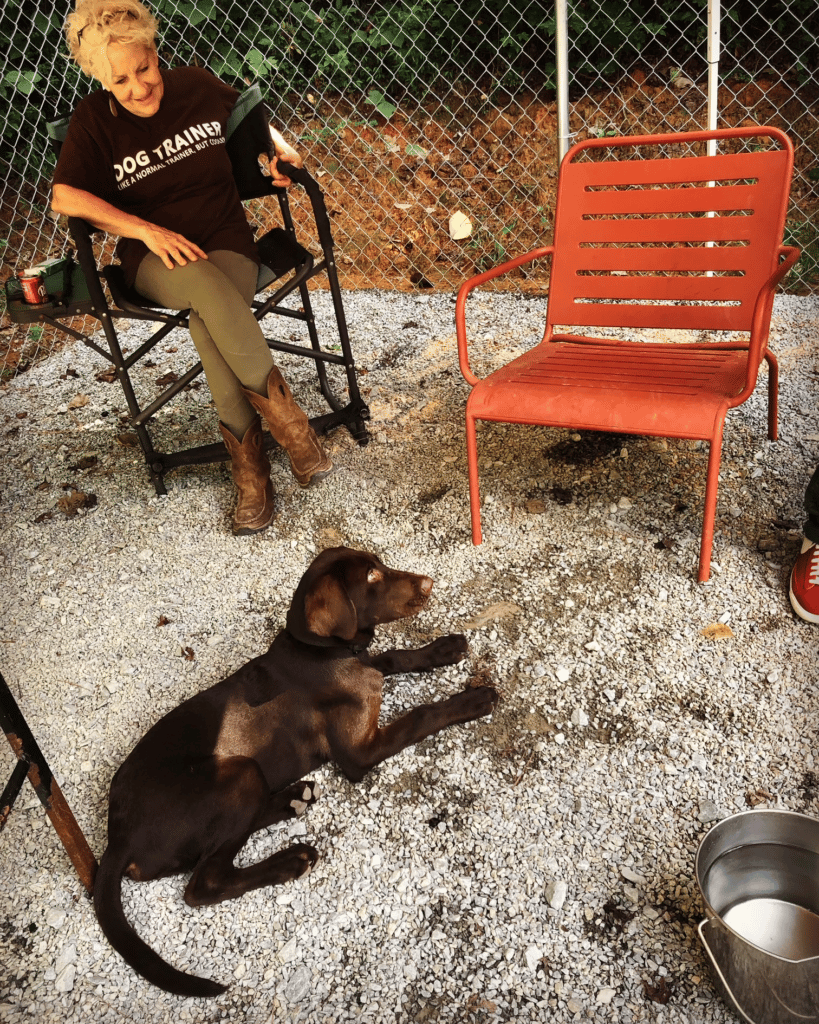Three things training a dog can teach us about marketing

“Communication problem.”
It wasn’t the first time I’d heard that diagnosis from Jenny Westmoreland, dog trainer/behaviorist extraordinaire and owner/operator of north Georgia-based I-Speak K9, but her words took on new meaning after having my puppy, Roux, in her program last year. We discussed training and new pets as I picked him up from a post-training weekend boarding stay, and Jenny introduced me to a few of her current canine pupils as we went to collect his things.
At least one in five households now have a canine. That’s according to a May 2021 ASPCA study that estimated approximately 23 million Americans acquired a dog or cat during the COVID-19 pandemic. Whether you have a pandemic pup or were a dog owner long before the virus, you understand what it’s like to welcome a non-verbal yet personality-infused being into your home.
Maybe you adopted a well-mannered, mature dog. Or perhaps you were slightly insane like some of us and added a 12-week-old chocolate lab to your small home, praying your almost perfect, then 13-year-old rescue mutt wouldn’t hate you for the rest of his days. (Spoiler alert: He’s still kicking and has adjusted, if begrudgingly.)
I knew when we decided to get Roux we’d have to invest in training. After all, even a mild-mannered male lab will be at least 70-90 pounds within a year (he’s now 15 months, clocking in around 80 lbs). Channeling his energy and behavior is the difference between enjoying daily walks or chasing him through the park. It also dictates if we can have visitors over or if your every move is dictated by a dog.
It’s been really interesting to me learning how the methods of our dog trainer resonate in the marketing world. It should be no surprise, really – Jenny has a background in applied behavioral science, an area of study that has helped marketers better understand human behavior to target their campaigns. It’s a tactic that has proved critical, especially in our busy, chaotic environments, where messages are constantly competing for our attention and become more precise and less scattered.
There’s nothing inherently wrong with casting a broad net. You’ll probably catch something. But unless your budget is endless, and you don’t care too much about ROI (I’ve yet to meet one of these types of clients), you need to attract more qualified leads – those people who are most likely to become your customers. And if that’s the case, we look at consumer (or animal) behavior to better understand where to direct our time and your budget.



Three key takeaways
Understand motivations.
When you’re training a dog, it helps to know what motivates that particular animal as you try to mold his behavior. Roux was, and still is, highly motivated by food. We eventually went from a puppy who threw himself at unopened bags of kibble and would knock the bowl from your hands to get at his food, to one who now understands he must sit and wait (excitedly) until he is released to come eat.
As marketers, we need to understand what motivates a particular client’s customers so that we can build a plan that not only meets potential new customers where they are but does so with a message that resonates.
Don’t Wait.
Any competent dog trainer will insist you get started as early in your dog’s life as you can. There’s less time for bad behavior to become ingrained in an animal, and, their humans. Plus, a behavior that is a little annoying but also somewhat endearing to you, the dog’s owner, could jeopardize the dog’s safety or cause problems with a visitor or stranger. Continually reinforcing and rewarding good behavior all of the time pays off.
Similarly, be wary of neglecting marketing entirely because things appear to be going smoothly at the moment. Certainly you don’t want more customers than you can competently serve, but stopping all promotional efforts has negative effects on top of mind awareness and can affect future revenue. Ensuring your brand and name recognition remains strong, even in good times, is important.
When the aging HVAC in the home I just purchased begins to struggle and a replacement is inevitable, I’m likely going to think first about those company names I consistently see or hear. I may ask my friends and Google who they recommend, but nothing can replace what first comes to the mind of a consumer, especially if all those things come together in a positive way.
Be Consistent.
“Mean It.” On her first visit to meet Roux, Jenny mentioned that lots of friends and clients gift her T-shirts with dogs or dog training themes she regularly wears and loves. But, she said, if she were picking the slogan to put on her shirt, it would simply state, “Mean It.”
Obviously, human beings and dogs are not the same, especially when it comes reasoning. But with both, communication is key. Clearing up the language barrier, between humans and their dogs is often the key to resolving problematic behaviors. Simple, repetitive, easy-to-understand commands are the tools. Whatever the command, you must stick to it to have success.
That’s why brand voice is so important when it comes to marketing. Though you may have various types of communications across multiple channels, your brand voice – your personality – must remain the same. Take a prominent and successful example – Nike. Almost everyone could tell you its slogan, “Just Do It.” Just do… what? Nike’s success in marketing has come not from defining the “it” for consumers. We all have our own “it.” Instead, they’ve defined how to go about the “do” using images and storytelling that consistently convey persistence, strength and resilience, no matter how many different athletes they portray. Our dogs can “read” us just like an audience can interpret that Nike slogan on a personal level. We need to make what we say count. We need to mean it.
Back